




Knowing about the Gigantic Structures on Earth - Mountains
Families begin making travel arrangements to far-off places as soon as the holiday season begins. To enjoy a fantastic holiday together, many families prefer travelling to hill stations and higher up in the mountains. Children adore it because of the beautiful views from the mountaintops and the peaceful, lovely ambiance that is surrounded by nature.
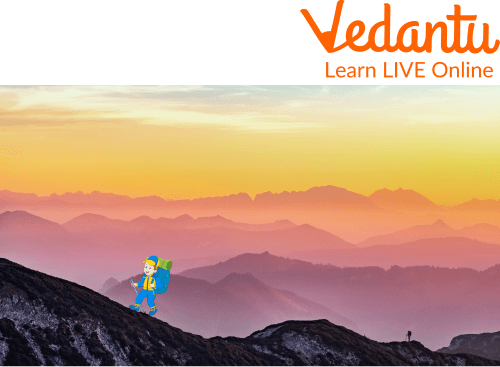
Mountains
For young children, the world is very different, especially in our modern cities, which are essentially dense jungles of concrete blocks with almost any indication of rich greenery or animals. Your child may become enthusiastic about taking another trip and explore their books or the internet for more information if you spark their interest in the development of the mountains and the different shapes the Earth takes. If you wish to introduce your child to mountains, their types and some interesting facts about mountains, keep reading through the following content.
What is a Mountain?
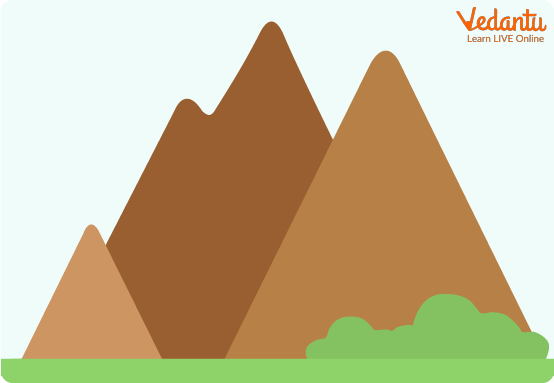
Mountains
A landform that peeks over its surroundings is a mountain. It typically has steep slopes, a rounded or pointed summit, and is taller than a hill. Mountains are typically found in groups. Mountain ranges are collections of mountains. Mountain belts are formed by range lines.
How are Mountains Formed?
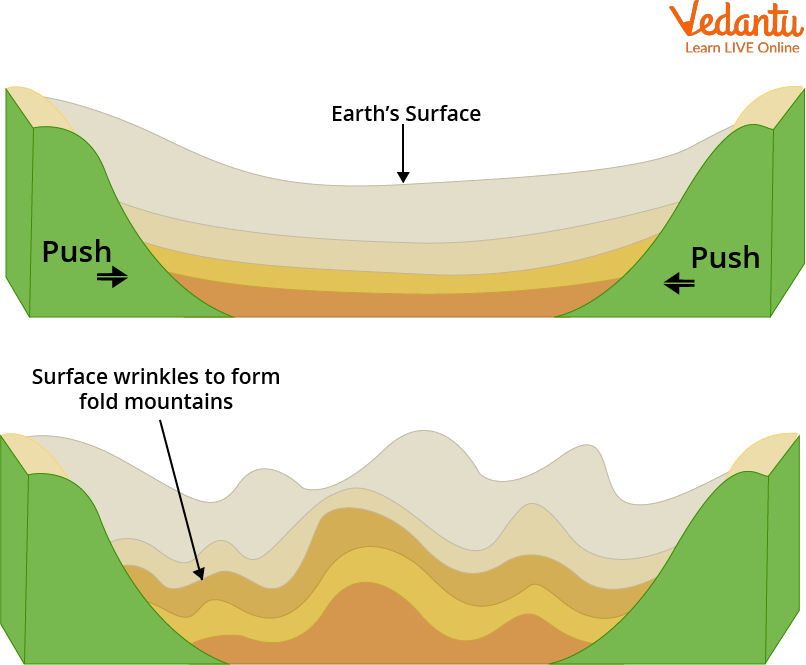
Formation of Mountains
Some mountains were created as a result of volcanic activity. Most volcanic mountains, according to scientists, are composed of rock that melted deep inside the earth.
The crust of the earth's surface was broken by the rock. Then lava began to spill out onto the surface. The lava and volcanic dust gathered to create mountains.
Mountains formed by volcanoes are often steep and cone-shaped.
Examples of volcanic mountains are Mount Fuji in Japan, Mount Kilimanjaro in Africa, and Mount Rainier in the United States.
Other mountains were created by changes in the crust of the earth. This kind of mountain construction is explained by the idea known as plate tectonics. The surface of the earth is divided into massive, slowly moving plates. The continents move with the plates as they pass over them. The rock is occasionally forced upward when the plates clash. This kind of mountain chain is shown in Asia's Himalayas. They were created when an Indian plate and an Asian plate clashed.
Different Types of Mountains
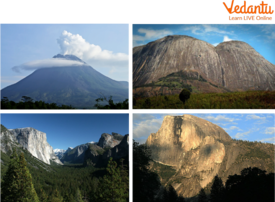
Different Types of Mountains
The following are the different types of the mountain:
Volcanic Mountains- These mountains are created as a result of the eruption of volcanoes and the movement of tectonic plates.
Fold Mountains- When two or more of the tectonic plates of the earth collide, fold mountains are formed.
Block Mountains- Block mountains are created when a fault block is raised.
Residual Mountains- Remaining mountains are created by the erosion of an elevated area. As an alternative, these structures are also referred to as mountains of rifting.
Dome Mountains- Dome mountains are produced when massive magma globules rise from the crust's interior and push up nearby rocks, causing the crust to swell in a spherical shape.
Block Mountain Formation
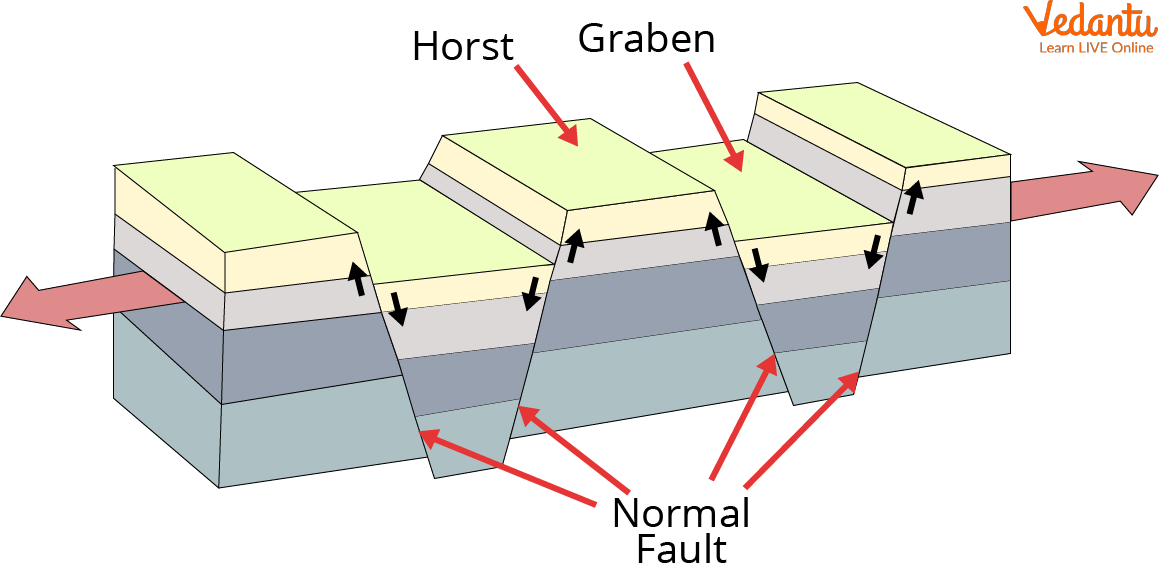
Block Mountain Formation
When two tectonic plates separate from one another, the earth's surface becomes cracked and blocks of mountains are created. Block mountains may emerge when parallel fissures or faults occur due to the raising of the strip or block of land between them. A horst is the name of the upward block. The Black Forest and the Rhineland Vosges are two examples.
Block mountain formation can also happen when two parallel faults cause the earth's crust to sink on both sides. As a result, there is a block mountain situated between two rift valleys. The term "graben" refers to the ground that is sinking. Rift valleys in East Africa are one example.
Facts about Mountains
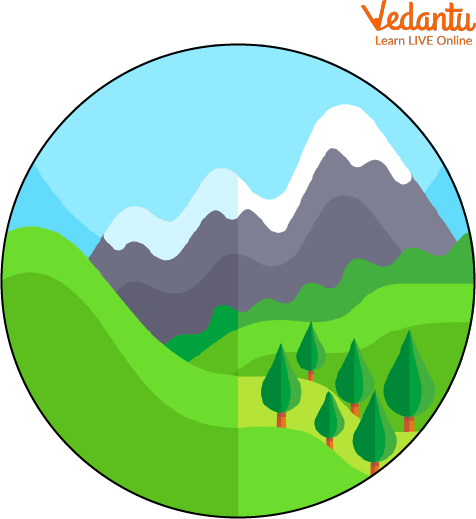
Mountains View
The following are some amazing facts about mountains:
The majority of the world's highest mountains are found in the Himalayas, including Mount Everest, which is 8,848 metres tall and is the tallest mountain in the world.
The 8,611-metre-high K2, which is situated in Pakistan, holds the record for being the second-highest peak in the world after Mount Everest.
The UN Environmental Program estimates that mountains occupy 24% of the planet's surface.
Summary
Mountains are crucial and beneficial in many ways. It offers a place for animals and other environmentally impacting things. This is a typical item that is available everywhere. This brings our biome's impact on the environment to a close. So the next time you go on a trip to the mountains, try to identify which type of mountain it is and what kinds of plants and animals are present there.
FAQs on Learn How Mountains are Formed and the Types of Mountains
1. What are mountains?
A mountain is a landform that rises considerably above its surroundings and typically has steep slopes, a small peak area, and significant local relief. Generally speaking, mountains are bigger than hills, however, the term "mountain" has no accepted geological meaning.
2. What effect do mountains have on us and what would occur if there were no mountains here?
Mountains supply us with a variety of essentials like timber, grazing land for animals, clean water, and fresh air. All of these services are given by mountain ecosystems through intricate processes that are preserved by the interactions between the community of various species and the abiotic environment.
There would be immediate effects if the mountains on earth were suddenly erased. If the crust driven into the mantle beneath it reacted, it would cause earthquakes throughout the world. If the stone plugs in volcanoes were removed or damaged, eruptions would occur. Also, mountains are also responsible for rains and preventing extreme weather conditions in some countries, this would also be affected.
3. Why are mountains so vital to the earth's ecosystem?
Mountains are the "water towers” of the world, providing between 60 and 80 per cent of the world's freshwater resources. The survival of at least 50% of the world's population depends on the water, food, and clean energy provided by mountain ecosystem services.









